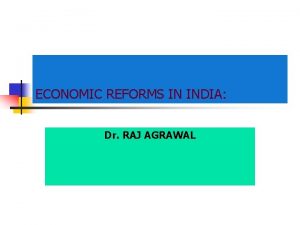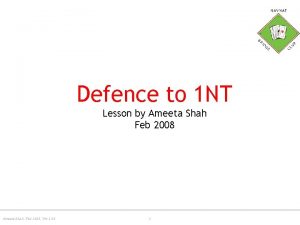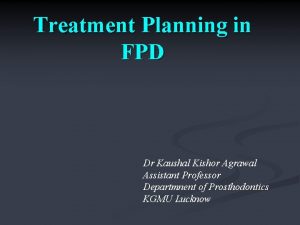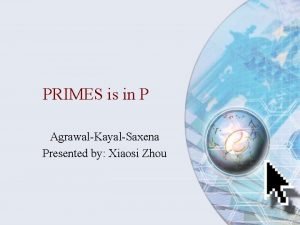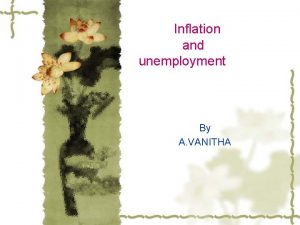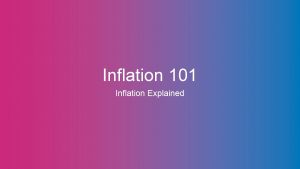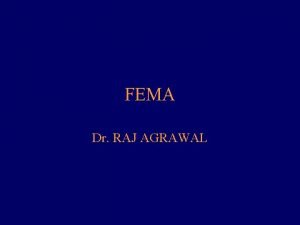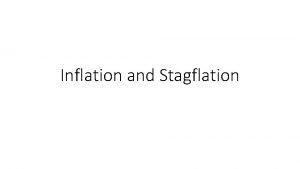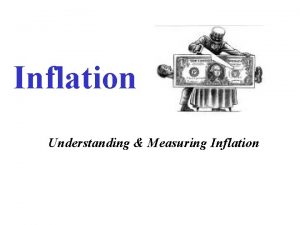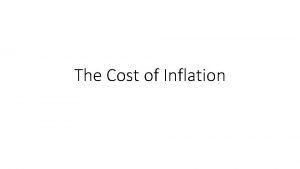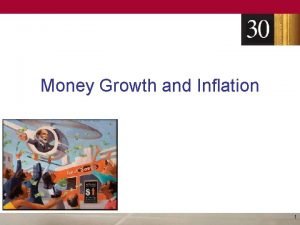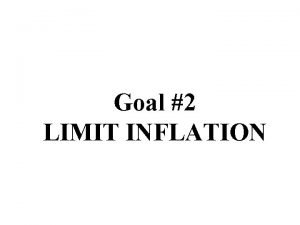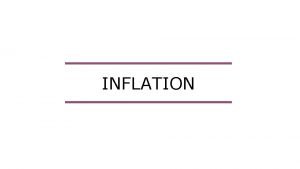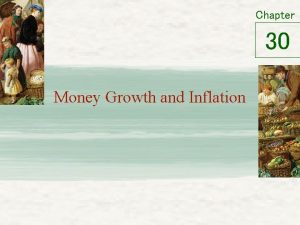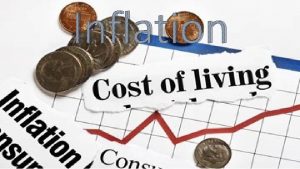INFLATION Dr Raj Agrawal INFLATION Inflation is a
















- Slides: 16

INFLATION Dr. Raj Agrawal

INFLATION • Inflation is a rise in the general level of prices of goods and services in an economy over a period of time. • The term "inflation" once referred to increases in the money supply (monetary inflation); however, the relationship between money supply and price levels have led to its primary use today in describing price inflation. • A loss of purchasing power in the medium of exchange.

• ONE SHALL ALWAYS INVEST MONEY & LET IT GROW. ADVERSE EFFECTS - Discourage investment and saving. - Widening of real income gap. - Shortages of goods due to hoarding. • Economists favor a low & steady rate of inflation. Central Banks help in doing so.

METHODS • A Consumer Price Index (CPI) is a measure of the average price of consumer goods and services purchased by households. • A Weighted Price Index (WPI) is a measure of changes in the prices of goods at the wholesale level, particularly those goods sold between businesses.

TYPES OF INFLATION • DEMAND-PULL • COST-PUSH • PRISING POWER • STRUCTURALIST DEMAND-PULL INFLATION Occurs when the total demand for goods and services in an economy exceeds the available supply, so the prices rise. Causes • Increase in Public Expenditure, Increase in Investment

DEMAND PULL INFLATION COST PUSS INFLATION

COST PUSH INFLATION There’s no increase in aggregate demand, price may still rise. • Wage-push inflation • Profit push inflation • Increase in prices raw material PRICING POWER INFLATION Occurs when ever businesses in general decide to boost their prices to increase their profit margins. STRUCTURALIST INFLATION The term applies whenever any of the other three factors hits a basic industry causing inflation there, and since the industry hit is a major supplier of many other industries, as for example steel is, or oil is, that raises costs of the industries using say steel or oil, and forces up prices there also, so inflation becomes more widespread throughout the economy, although it originated in just one basic sector.

CAUSES OF INFLATION ü Over-expansion of Money Supply ü Expansion of Bank Credit ü Deficit Financing ü Ordinary monetary factors High Non-development Expenditure Huge Plan Investment Black Money High Indirect Taxes

ü Non-Monetary Factors o o o A high Population Growth Natural Calamities and Bad Weather Conditions Speculation and Hoarding High Prices of Imports Monopolies Underutilization of Resources ü Demand-pull inflation

EFFECTS OF INFLATION Inflation is the increase in the price of general goods and service. it causes slow down in the economy. Some negative effects of inflation are: ü Slowdown in consumption as well as production. ü Cost push inflation ü Hoarding ü Hyperinflation ü Shoe leather costs ü Menu costs ü Inflation erodes the real value of nominally fixed payments

Controlling Inflation A variety of methods have been used in attempts to control inflation. ü Monetary policy ü Fixed exchange rates ü Wage and price controls

POLICIES ADOPTED…… FISCAL POLICY- It is defined as the policy under which the government uses the instrument of public spending, taxation and public borrowing. 3 instruments of fiscal policy: ü Taxation policy ü Public expenditure ü Public debt policy MONETARY POLICY- Under this policy the government controls the supply and availability of money.

Steps taken by Indian government to control current inflation problem • Rising inflation due to the high global price of crude oil, was a cause of concern. “An unprecedented situation is now being witnessed on the price front” • Major steps taken were liberalization of imports, banning export and cut in excise and custom duty.

CURRENT SCENARIO OF INFLATION

• In India inflation is at an acceptable level. • Off late prices of essential commodities have risen sharply and therefore driving up the inflation rate. • In India two types of index: i)Consumer price index. ii)Wholesale price index. • Shortfall in domestic production vis-à-vis domestic demand. • Inflation was also accompanied by buoyant growth of money and credit. • While the GDP growth is zoomed to 9% per annum, the broad money grew by more than 20%.

THANK YOU
 Dr raj agrawal
Dr raj agrawal Asptro
Asptro Dr deepak agrawal
Dr deepak agrawal Dr kaushal agrawal
Dr kaushal agrawal Ameeta agrawal
Ameeta agrawal Agrawal-kayal-saxena
Agrawal-kayal-saxena Krati agrawal
Krati agrawal Definition of biomedical waste management
Definition of biomedical waste management Shankarlal agrawal science college salekasa
Shankarlal agrawal science college salekasa Divyakant agrawal
Divyakant agrawal Subodh agrawal
Subodh agrawal Anoop agrawal
Anoop agrawal Ca rakesh agrawal
Ca rakesh agrawal Shweta agarwal iit madras
Shweta agarwal iit madras Vishwani agrawal
Vishwani agrawal Introduction of inflation
Introduction of inflation Raj lyer
Raj lyer
